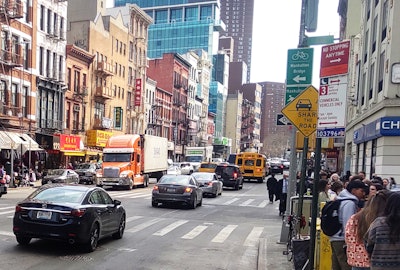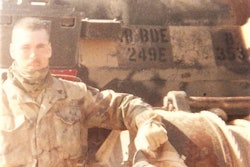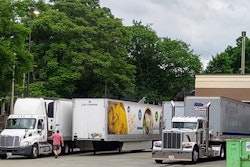
This is not a topic I enjoy or take any pleasure in writing about. However, by doing so I hope to help any aspiring or new truck owner avoid making decisions that later result in financial hardship -- possibly even in losing the business entirely.
Recently I’ve received an increase in calls from truck owners struggling to keep their businesses afloat. To one extent or another, all blame an increase in their insurance premiums as the cause of their situation. Most believe it’s a result of their greedy xxxxxx insurance carrier who doesn’t care if they go out of business or not. As a longtime independent owner-operator now principally working as an insurance agent, these calls have been especially difficult for me. While honesty is always the best policy, and it’s the only way I know how to help, it’s not always well received.
All of those who have called and asked me for help share some things in common. Still in their first year of being in business, they have:
- Grown their fleet of trucks and hired drivers (usually includes at least one family member).
- Failed to vet drivers and only hire drivers with clean or at least good motor vehicle records.
- Not limited their claims by dismissing drivers whose actions resulted in a claim or claims.
- Waited until there are few options available to be able to remain in business.
Sadly, most who find themselves in this circumstance seldom recover and make it to their second or third year in trucking. Hindsight is 20/20, I know, yet all could have benefited had they had opportunity to read the story at this link about common pitfalls associated with growing too quickly, based in part of my own personal experience. Many could have avoided the unfortunate circumstances by implementing the strategy outlined in my story on just what to do to make certain your insurance premium is as low as it can be.

[Related: Moving beyond just one truck: The case for careful preparation]
Unfortunately, none of the owners I’ve spoken to seem to be aware that their business decisions have caused the consequences they find themselves facing. Put another way, it’s not the fault of greedy insurance companies. As difficult as it is to hear, these are self-inflicted wounds incurred as a result of an unaware business owner’s decisions.
Ok, now that that’s out of the way, next is the inevitable question from the truck owner of just “what do I do now to stay in business?” I always tell them the good news is there is a path to stay in business and reduce your insurance costs. Few, however, are receptive to what is necessary: All too frequently it is because it involves downsizing, which most are unwilling to do.
Each and every time downsizing is categorically not an option, it’s because it means letting a family member go from employment. I’ve had fathers and sons, brothers and brothers-in-law all tell me that very thing. This is why few recover and save their businesses. Instead, they elect to attempt to continue business as usual to an unfortunate, and completely preventable, demise.
Additional changes to your insurance policy are far less impactful in the amount they reduce your premium, yet they can still be effective tools to utilize to save money. These changes include:
- Reducing your radius of operation.
- Locating and operating your business outside of regions that by nature result in higher than usual commercial-auto liability insurance premium rates -- areas, for instance, around major cities like New York, Los Angeles, Chicago, Miami, etc.
- Removing coverages that are not required such as general liability, hired auto, non-owned trailer, and etc.
- Adjusting the commodities you transport in favor of less-risky and lower-cost commodities, including those with less nominal risk of theft. Remove all hazmat from your profile, then freight such as electronics, pharmaceuticals and shell fish in favor of more general freight like canned goods, paper, non-alcoholic beverages and ag products like grain and feed.
- Increase your deductibles to the maximum amount offered by the insurance company.
[Related: Was truck ownership supposed to be this hard? On keeping cool when difficulty heats up]
If you’re truly in crisis mode, the first step to reducing your insurance cost is to identify and take advantage of all/any of these five listed options. Then, concurrently, downsize your operation to one truck, trailer and yourself as the driver if you’re not already there. This will provide you the best possible opportunity to save your business.
Find more information about the ins and outs of insurance cost management, among a myriad other topics, in the Overdrive/ATBS-coproduced "Partners in Business" manual for new and established owner-operators, a comprehensive guide to running a small trucking business. Click here to download the newly updated 2022 edition of the Partners in Business manual free of charge.










